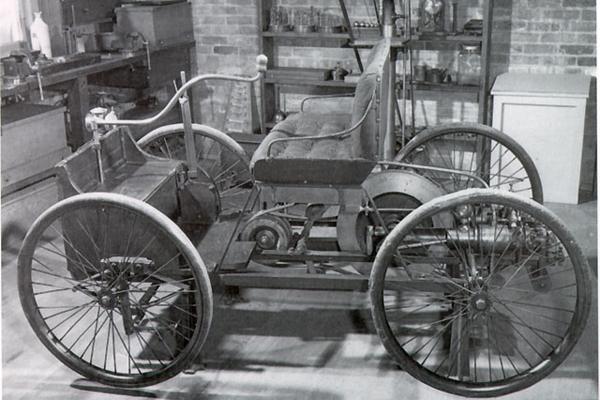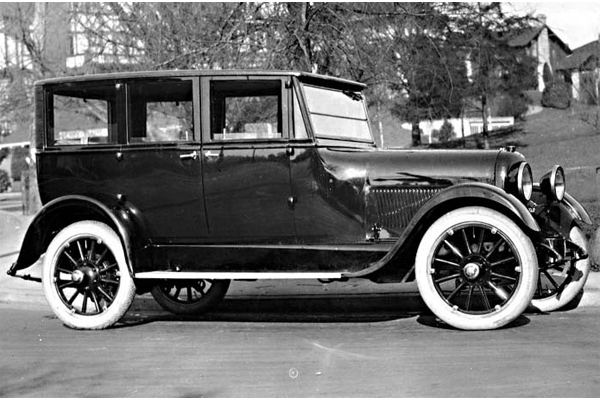-
The paint industry as we know it today, is relatively young. However, historical studies show that paint had its origins many years ago, when it was used as a means of decoration and artistic expression.
Example still exist of crude paintings made by primitive cave dwellers in pre-historic times. These daubs on the rocks consisted of red, yellow and black colours, made from raw earths, clays and burnt wood carbon, probably mixed with animal fats. Their survival over 25,000 years is due to the fact that they were sheltered deep in the caves. They certainly would not have stood up to the weather outdoors!
 Some progress began with the early civilisations and the ancient Egytians began to develop more colours. In addition to the red and yellow ochres, they also used green, red and blue pigments, which were derived from various minerals ground down to form powders. These were bound together with items such as natural gums obtained from trees, eggwhite (or albumen) and beeswax. The mixtures were applied with crude reed brushes onto the thin tombs in the Pyramids.
Some progress began with the early civilisations and the ancient Egytians began to develop more colours. In addition to the red and yellow ochres, they also used green, red and blue pigments, which were derived from various minerals ground down to form powders. These were bound together with items such as natural gums obtained from trees, eggwhite (or albumen) and beeswax. The mixtures were applied with crude reed brushes onto the thin tombs in the Pyramids.The Romans also had a wide variety of pigments such as white lead, chalks, ochres and lakes. The lakes, originally developed by the Egytians, were in fact an example of an early synthetic material and consisted of chalk coloured with natural dyes, thus creating red pigments with a brighter tone than the rather dull, earth colours.e mixtures were applied with crude reed brushes onto the thin tombs in the Pyramids.
The white lead, known as lead carbonate, was formed as a pigment on the surface of lead plates immersed in vinegar (acetic acid). It reacted to form a paint film when mixed with drying oils, which where were now being discovered as useful binders. These drying oils were vegetable oils, such as linseed, which was obtained by crushing the seed of the flax plant, grown extensively for both seed and cotton fibre.
Linseed oil, in fact, still remains an important ingredient in modern alkyd resin manufacture, as do a number of other vegetable oils, such as soya bean, sunflower, softflower, rap seed and castor oil, all from plants – and tung oil and tall oil, from trees.ich was obtained by crushing the seed of the flax plant, grown extensively for both seed and cotton fibre.ids.
The ancient Greeks, as well as being familiar with all the pigments, were among the first people to realise the value of applying a coating for protection (rather than just decoration), and used “pitch” to render their wooden ships more waterproof. Pitch, a form of the modern Bitumen, is derived from the natural deposits of asphalt found in many places worldwide.an>ids.
Among these art forms existing as long as 1,500 years ago, was the lacquering process, highly developed by the Japanese and Chinese. The lacquer itself consisted of the sap extracted from the so-called Varnish Tree (Rhus Vernicifera). Used as decoration on woodenware, it was applied in 30-50 coats, dried by oxidation, and was extremely hard wearing. Exmaples seen today have to be carefully preserved in a humid atmosphere, as it will crack if exposed to dry central heating conditions.
Another lacquer of Eastern origin was Shellac. This was formed of the excretion from small beetles and found in hard layers on trees in India and Thailand. Dissolved in alcohol, it could be used as a coating which dried by evaporation, as a raw material, is still used today, in Frech polish for furniture and, more familiarly, in isolating sealers, because of its insolubility in hydrocarbons.
In Europe however, it was not until the Middle Ages that the value of drying oils was fully appreciated. Painting had developed into one of the great arts, and linseed oil found its place as a binder for the pigmnets.
The artists’ oil paintings were further protected from the atmosphere by a coating of varnish, made by dissolving resins tapped from trees, in hot oils of the drying type, such as linseed, hempseed or walnut. Unfortunately, these all tended to darken badly with time, as can be seen on some of the ‘Old Masters’ painting existing today.
By the 18th and 19th cenuries, paints and varnishes had begun to form protective coatings.
To cope with the greater demand, factories were established and manufacture began on a larger scale. Modern technology had its beginnings with the appearance of some synthetic pigments. The drying properties of the paints were found to improve by the use of additives of compounds of metals, such as lead and manganese.

The use of boiled linseed oil (as opposed to the raw) was found to improve the drying properties quite markedly.
Paint quality was also improved by the use of new resins imported from Africa. “Copals” were used extensively; these were fossil resins, dug up from the ground in a solid form, being the remains of fossilised trees and vegetation. When refined, melted and mixed with linseed oil (Known as the cooking process), they formed oleoresinous varnishes.
Varnish making itself had become a highly skilled craft, and the paints based on these oleoresinous varnishes were much superior to the earlier oil based products. They were used extensively into the early part of this century, and are still used to some extent today, where low price with good water and alkali resistance are important properties.
At the beginning of the 20th century, paint had begun to evolve into the products we know today, with mordern materials becoming more readily available.
At the beginning of the 20th century, paint had begun to evolve into the products we know today, with mordern materials becoming more readily available
The early 1920’s saw the innovation of fast dry paints. These were based on the nitrated cellulose used for high exploisives, of which a surplus remianed when the Fisrt Worlds War ended.
 Know as nitro-cellulose lacquers, they were the first materials adaptable for the spray-painting of the motor car. By replacing the old and laborious hand painting methods, they allowed mass production to become a reality.
Know as nitro-cellulose lacquers, they were the first materials adaptable for the spray-painting of the motor car. By replacing the old and laborious hand painting methods, they allowed mass production to become a reality.As the car industry expanded, so did the demands for petroleum, and in turn, the continued growth of the oil industry. A much bigger range of solvens now became available to the paint manufacturers. New hydrocarbons, esters, ketones and alcohols all contributed to the better application and drying of paint.
From the by-products of crude oil, now emerged new organic pigments and dyes such as the Phthalocyanine Blues and Azo Reds with their cleaner tones and better colour stability.
Titanium Dioxide White became more widely available and with its better hiding power and low toxicity, it replaced the dangerous white lead that had been used for many years.
Harder resins and tougher alkyds were produced by scientifically controlled methods, and stoving enamels were formulated – an important step in the ever faster production schedules demanded by the car industry and other mass produced fabricated metal work.

Since 1950, the paint industry has expanded more rapidly than at any other time in its history.
Pigments have continued to improve in term of colour selection and durability, and safer solvents are reducing the hazards of manufacture and application.
Together with constantly improving alkyds, the introduction of acrylics, vinyls, polyesters and polyurethanes had made it possible to formulate coating for every type of substrate.
Among new application techniques, we now hace continuous coating of sheetmetal coils, electrodeposition of rust proofing primers and the robotic spraying of colour coats, all far removed from the image of traditional painting methods.
The business structure of the paint industry has also been subject to great changes during this century.

For example, ICI Paints had its origins in the amalgamation of a number of UV paint makers. These included Nobel Chemical Finishes, Stowmarket, who were making Nitro-Cellulose topcoats, and Naylor Bros., Slough, who had the oil based undercoats. Both products fitted together to supply the booming car industry in the Midlands. More recent acquisitions have been in America (Glidden) and in Europe (Valentine and Inmont).

This sort of structure enables research and development, manufacture and marketing all to be carried out on a global scale. The ten top-ranking companies in the world hold about one third of the market and are still expanding.

The remaining two thirds is shared between several thousand small companies, worldwide. These tend to be involved in making a simple range of products for decorative and art purposes, or the manufacture of highly specialised coatings, used only in relatively small quantities for projects, such as space exploration or defence programmes.

*************************
An old recipe based on natural resins and pigments in 1921
Wattin’s formula for a Gold varnish for Brass.
Sticklac 150 part wt Resin
Gamboge 150 part wt Resin
Dragon’s Blood 150 part wt Resin
Annato 150 part wt Colouring
Saffron 32 part wt Colouring
Alcohol 1000 part wt Solvent
********************
Sticklac is Shellac, secreted by a certain type of insect of South East Asia.
Gamboge is a gum resin from Thailand, Celon and Cambodia.
Dragon’s Blood is a dark red gum obtianed from the fruit of a palm in South America, the Canaries and the Indies.
Annalto is a red dye from the fruit Bixa Orellana.
Saffron is a yellow dye obtianed from the oriental plant Crocus Sativies.
Shellac and Alcohol are still used in the resin solvent systems of ‘isolators’.




